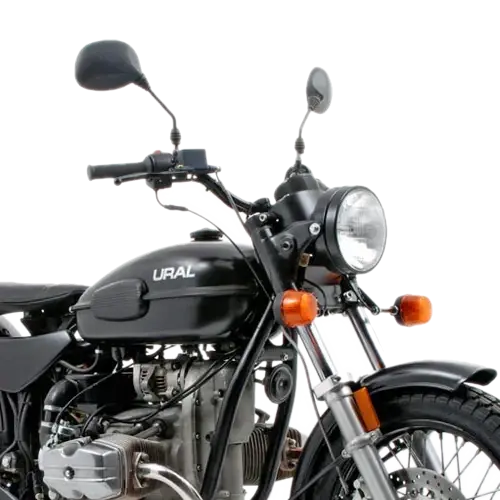The technology behind it isn’t new, but The Thought Emporium is a Youtuber who:
1: DIY-d a genetically modified virus to cure his own lactose intolerance (successfully)
2: Is currently working on a biological computer that runs on animal neurons.
3: Has livestreams where the viewers submit ideas (like making tomatoes spicy) and he designs DNA to accomplish it.
Also he helped shut down a scam health product that contained radioactive material which isn’t particularly futuristic (actually it reminds me of the “radiation is good for you” craze in the early 20th century) but I wanted to mention it anyways.
Smartphones. The sheer fact that we’re able to fit these cameras, computer chips, and everything else into these thin glass slabs is still mind-blowing to me.
Even just the screen is absurd.
Turns out we can express most of proteins, some of the time, and then isolate them. This includes enzymes, when isolated these can do things like they naturally do but now in flask, but also they do things that aren’t remotely natural but are useful for us. These things are pretty fragile usually so then some of these can be modified so that they are resistant to higher temperatures, detergents etc. This is not only the nerdy shit like advanced chemical synthesis - lots of dishwasher tablets and and washing powders contain enzymes that cut proteins into pieces (like subtilisin), so in some cosmic sense dishwasher digests your leftover food off plates
Enzymes are still proteins, and have all problems of proteins. Turns out, you can just take the most important part out of enzyme, make it, or something functionally similar out of completely synthetic parts, and it still works. Sure, it’s not as active or selective, most of the time, but it’s resistant to things that would absolutely shred proteins. This is called organocatalysis and it was subject of 2021 Nobel Prize
Sometimes you want to take an enzyme and make it not work. We also have a tool for that: first you have to get structure of that enzyme, or some receptor protein, and by looking how a small set of random molecules lodges in it you can make a very selective, very potent ligand, sculpting it atom by atom with no knowledge other than protein structure. If you have time and resources, this can be made to work for almost any protein (that can be crystallised)
mRNA vaccines. You can literally code a vaccine now. That’s just mind blowing to me.
Especially impressive when you consider the etymology of the word “vaccine” and realize that a century ago vaccines were created by incubating them in a cow
Every time I think about doing something illegal or hear about people from only a few generations ago doing something fun but slightly illegal.
Then I think. There is no way you could do that now the police would use all the surveillance that is everywhere and if I got caught their wouldn’t be a slap on the wrist and grow up. But it would be a serious issue for my future jobs and going to other countries.
Makes me think I’m in a futuristic movie. Just not one of the happy ending ones.
Decoding animal communication and interspecies communicstion with AI.
https://lemmy.world/c/digitalbioacoustics
(Which way should I be sharing community links on here?)
Should really be using the “! link”, not URLs. While both work on mobile apps, on the web version the URL redirects to the community’s instance.
Alright, thank you. Good to know!
Both work with “Sync for Lemmy”. Don’t know about other apps/sites.
Thankyou! I can also confirm that both work for me in voyager as well.
3D printing.
I’ve had a 3d printer for years and I still can’t really get over how nuts it is. Like it feels like one of those things you’d read about in science magazines as this amazing super scientific thing the scientists out in MIT have in their labs like a supercomputer or some expensive toy people who build stuff on YouTube have in their garage next to the lathe and big fancy CNC table, but no, it’s just, here. On my desk. Being used to casually print stuff that I’ve designed myself on the computer like it’s nothing.
My great grandad was a carpenter and I wish I could’ve shown him it. I wonder what he’d think, seeing something that was once only in the realm of handcrafted diagrammes and days of building now a few hours of modelling and printing away.
expired
The LANDSAT program. Not exactly new since it’s been going for about 50 years, but it’s still fascinating and maybe more relevant than ever with concerns about climate change.
We can get different types of data about a landscape from the different parts of the light spectrum. For example, telling coniferous and deciduous trees apart based on how they reflect light. Imagine echolocation on steroids, using light.
Thanks for sharing this I always wondered where they got those pictures.
I’m holding a small device in my hand that gives me access to all of humanity’s knowledge.
Granted, I’m using it to dick around on Lemmy, but…
To be fair there’s plenty of knowledge on Lemmy as of today… And porn, lots of porn.
I have yet to encounter any porn on lemmy.
Do you have the NSFW filter off within your Lemmy or app’s settings?
On behalf of Gnorv, yes. I have made sure multiple times that my NSFW filter is off. I have only seen an occasional NSFW - like One per month, and it’s never porn - even when I browse by New.
Please Help.
If you go to the instances page of your lemmy instance (eg lemmy.ml/instances) you can scroll down to the “Blocked Instances” section and you’ll probably find the bigger nsfw instances are blocked.
You’re not trying hard enough 🤪
The Internet is for porn!
Data compression. Something about “making less data out of … The same data” is really mind blowing, & the math is sick
It is not that complicated, to make a simple example with strings: AAAABBBABABAB takes up 13 spaces, but write (compress) it like 4A3B3AB take up 6 spaces compressing it more than 50%.
Now double it like AAAABBBABABABAAAABBBABABAB with 26 spaces and write it as 2(4A3B3AB) with 9 spaces it takes only 30% of the space.
Compression algorithms just look for those repetitive spaces.
Takes those letters and imagine them being colored pixels of a picture to compress a picture
Once you get into audio, images and video it revolves a lot around converting temporal and/or positional data into the frequency domain rather than simple token replacement.
Wait, isn’t your first example goes from 13 spaces binary to a 6 spaces of base 12 (base 10 + the two values A or B).
That would make the “compressed” result be 110111010111011101110011 which is larger than the original message when both are in binary…
Don’t overthink my example, it was just a representation
Fair enough. The general idea is correct, I just found that example rather jarring… It is generally more difficult to compress an already small amount of data anyway.
Every time I hear about World Coin scanning people’s retina’s for $50, driver monitoring tech inside new cars, or Amazon asking people to pay for things with palm prints I feel a bit like I’m living in the Minority Report. Does that count?
cyberpunk without any cool aesthetics.
What, you don’t appreciate the beauty of an anti-homeless bench? /s
I like how every single new car model is an almost-identical Crossover.
Funny story, I live in a place where people turn up their noses at the slightly smaller crossovers for identity reasons, and there’s a noticeable trend towards driving scooters with an aftermarket envelope because “normal cars” are just too big.
The future isn’t necessarily positive I guess
Voyager 2
Blows my mind every fucking time I read about it.
Props to the USA/NASA and their engineers for achieving something so long lasting with technology from ~50 years ago.
We have phones as powerful as computers in our hands when 20 years ago that was impossible. The exponential growth of computers and smartphones is mind-blowing. And the amount of technology that has bloomed from all of that
The DNS it’s so mind blowing to think about how we are able to map so many domains to so many ip adresses so smart and stable
Funny you should say that. DNS is 40 years old. Definitely not futuristic tech. But yeah, it works surprisingly well.
Yeah, still it feels futuristic
And that the service replies practically instantly every time no matter which domain you choose.
Edit: wtf is with these downvotes? DNS is without a doubt the fastest part of accessing the internet. In website load time, it’s an almost unnoticable fraction of the total load time.
Vegan Feta cheese
CoViD mask usage
PV panel price reduction
IPCC cooperation and language
Gamified drone wars producing music videos
PrEP
















